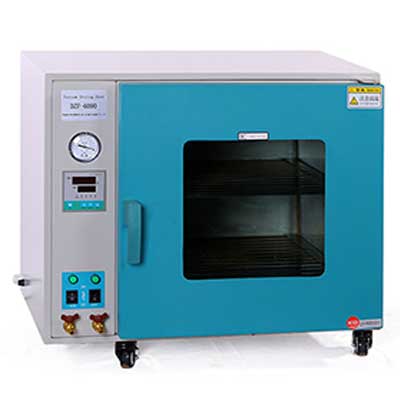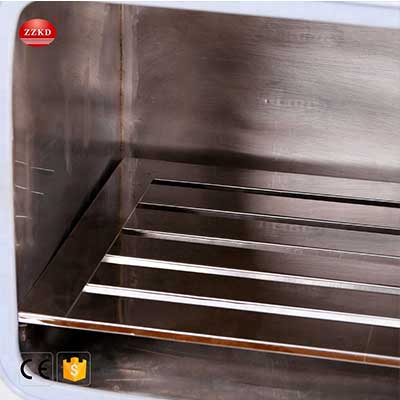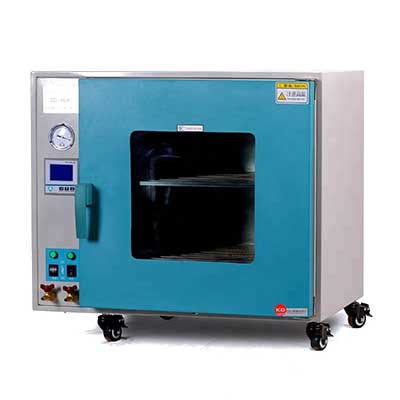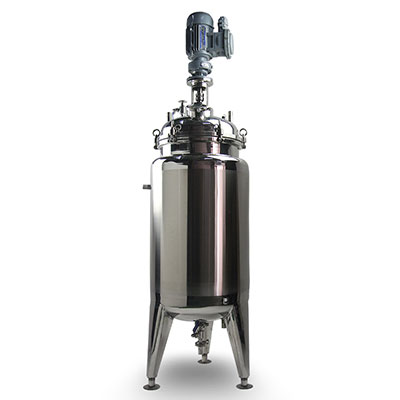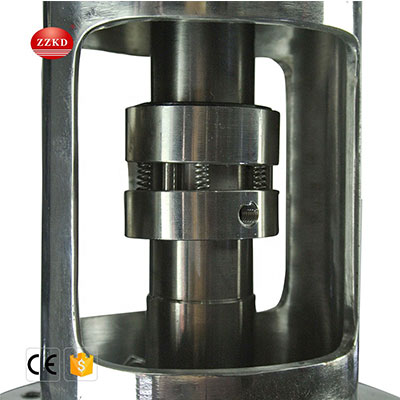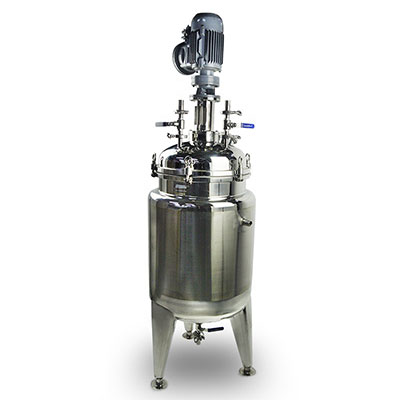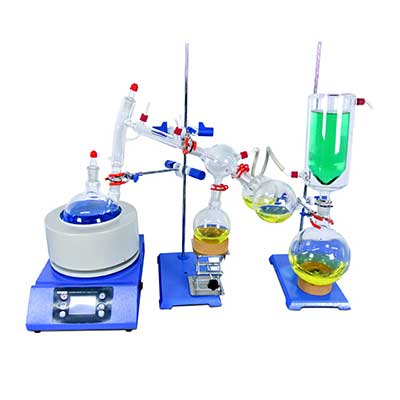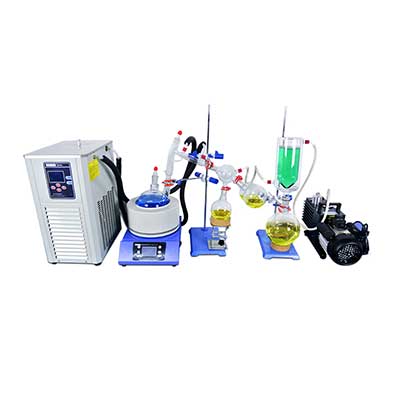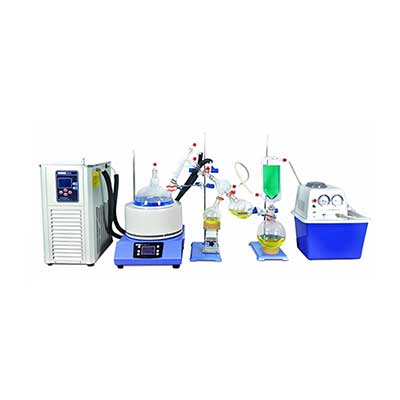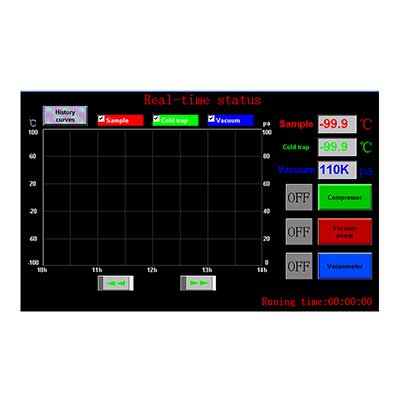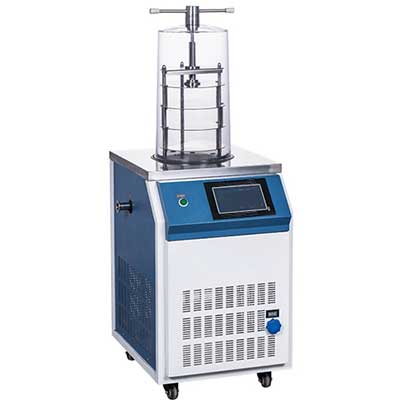-
WhatsApp
-
Email
Stainless metal reaction kettle has the characteristics of fast heating, excessive temperature resistance, corrosion resistance, sanitation, no environmental air pollution, no need for computerized heating of boilers, and convenient use. It is widely used in petroleum, chemical, rubber, pesticides, dyes, medication, meals, etc. Processes corresponding to sulfidation, nitration, hydrogenation, alkylation, polymerization, condensation, and so on. are based mostly on the premise of full mixing of the reacting substances. For physical changes similar to heating, cooling, liquid extraction and gasoline absorption, stirring gadgets are required to acquire Good outcomes, and may design and process outer coil jacketed stainless steel reactor pressure vessel for customers.

Principle features:
Atmospheric strain stainless steel lab reactor electrical heating reaction kettle has the traits of fast heating, excessive temperature resistance, corrosion resistance, sanitation, no environmental air pollution, electric heating stainless steel reactor vessel for sale response kettle, no want for computerized heating by boiler, handy use and low value. Widely utilized in chemical, pharmaceutical, meals and different industries, the material is 304 chrome steel. The structure principle and characteristics of the response kettle: the response kettle is composed of the pot physique, the pot cowl, the stirrer, the jacket, the help and transmission device, the shaft seal gadget, and so forth. The material and opening could be made in accordance with the consumer's course of requirements. Heating types include electrical heating, oil heating, fuel heating, water heating (or cooling), and open flame heating.
The jacket sort is divided into:
Jacket kind and outer half-pipe sort, and the jacket oil heating kind is equipped with a diversion gadget. The stirring types generally include paddle sort, anchor type, body sort, ribbon sort, wall scraping kind, and so on. High-speed varieties include dispersed impeller kind, turbine type, high shear kind and propeller kind, for patrons to decide on based on the method. The transmission varieties embrace odd motors, explosion-proof motors, electromagnetic speed-regulating motors, frequency converters, etc. The reducers include cycloidal pinwheel type, worm gear kind, and planetary stepless velocity change type. Shaft seals are odd water cooling packing seals, mixed tetrafluoro packing seals and mechanical seals. The discharge forms embrace ball valve and downward growth valve.
Application range:
stainless steel reactors are broadly utilized in chemical, meals, paint, hot melt adhesive, silica gel, paint, pharmaceutical, petrochemical production of response, evaporation, synthesis, polymerization, saponification, sulfonation, chlorination, nitration and different course of pressure vessels , such as jacketed stainless steel reactor pressure vessel, reaction kettles, decomposition kettles, polymerization kettles, and so forth. The reaction pot is especially composed of four elements: the inside tank, the jacket, the stirring device and the support base (the thermal insulation structure can be adopted based on the process needs). The inner tank is manufactured from chrome steel (SUS304, SUS316L or SUS321) and other supplies according to the needs of the method. The internal surface is mirror polished, which could be cleaned by CIP on-line and sterilized by SIP, which meets the necessities of hygiene requirements. The jacket is made of stainless-steel (SUS304) or carbon steel (Q235-B) based on the method necessities. Appropriate diameter-to-height ratio design, customized stirring system on demand; the stirring shaft seal adopts pressure-resistant sanitary mechanical seal system to take care of the working strain within the tank and stop unnecessary air pollution and material loss attributable to leakage of supplies in the tank. The supporting type adopts the hanging lug sort or the floor outrigger type based on the operation necessities.
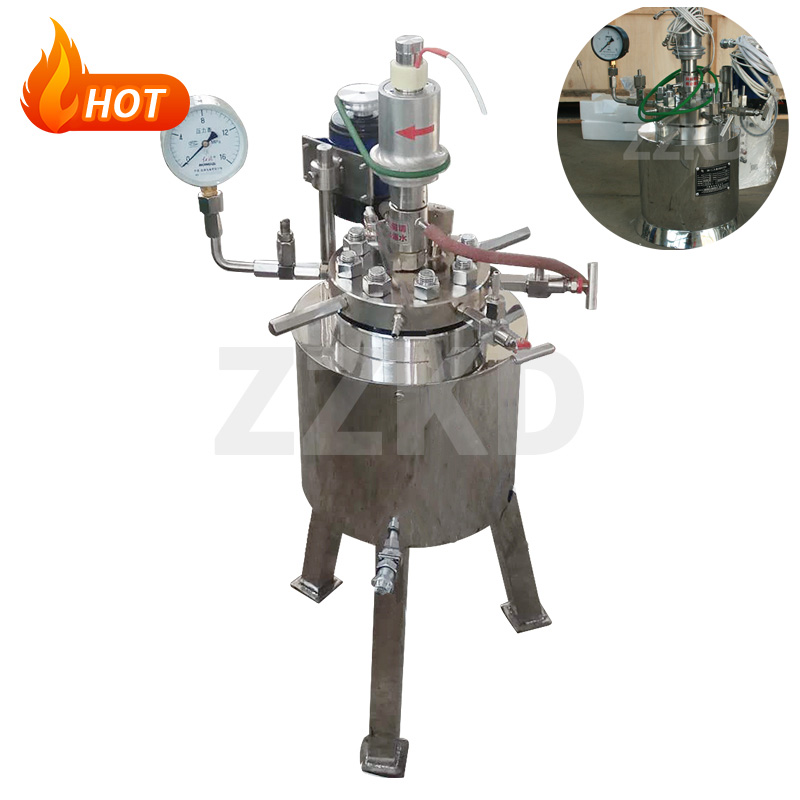
Structural properties:
The tools is especially composed of three parts: tank body, jacket and mixing system.
1, the fabric of chrome stainless steel lab reactor. The parts in contact with the fabric are manufactured from high-quality stainless steel similar to 304 or 316L, in line with GMP requirements.
2, accessories of stainless steel reactor vessel for sale The mixing kind is multi-frame mixing to make sure that the supplies are evenly combined in a short time; on the identical time, frame sort, anchor sort, paddle sort, etc. can be selected based on wants. The seal adopts sanitary mechanical seal, which might make positive the stress within the tank and forestall pointless air pollution attributable to leakage of supplies in the tank; the interface adopts ISO normal quick-loading clamp kind, which is convenient and hygienic; sterile respirator, CIP cleaning nozzle, sight glass , flange, sanitary quick opening manhole, and so on. three. Surface therapy of stainless-steel reactor The inner floor is mirror-polished to ensure no hygienic useless ends. The absolutely enclosed design ensures that the material is all the time in a sterile state. The outer surface could be optionally sandblasted, frosted, cold-rolled major color matt treatment. Heating and cooling: Steam, electrical heating and heat-conducting oil could be chosen as heating strategies to satisfy the technological wants of different working environments similar to acid resistance, alkali resistance, excessive temperature resistance, abrasion resistance and corrosion resistance.
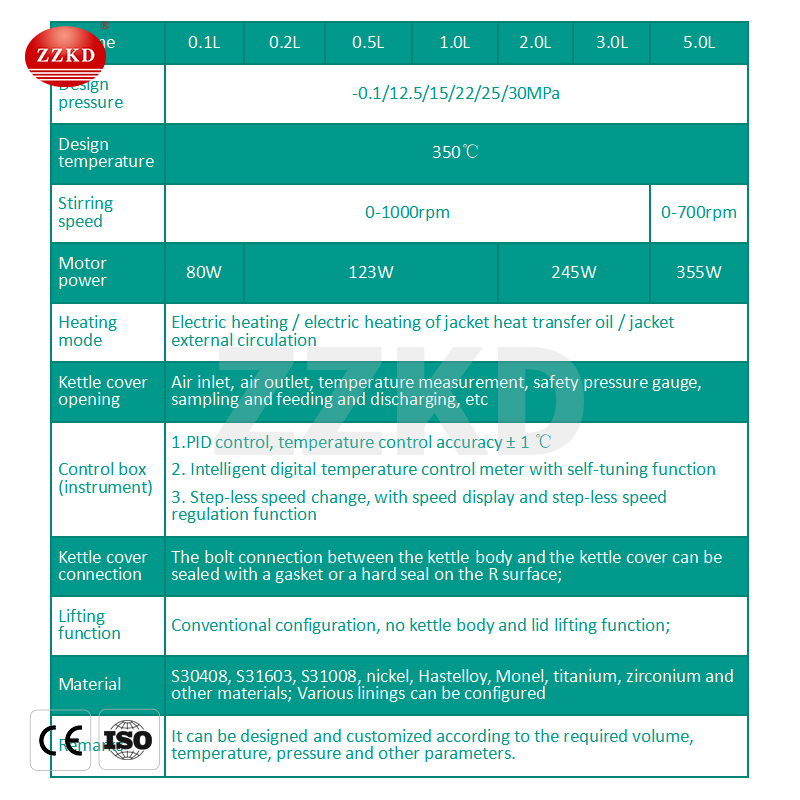
Operating procedures:
Before beginning the stainless steel reactor
1.Check whether or not the kettle, agitator, rotating elements, auxiliary tools, indicating devices, safety valves, pipelines and valves meet the security requirements.
2.Check whether the water, electrical energy and gas meet the security requirements.
The stainless steel lab reactor is in operation
1.The agitator of the response kettle must be turned on earlier than feeding. When there isn't any noise and it's normal, the fabric should be added to the response kettle, and the quantity of feeding shouldn't exceed the method necessities.
2.Before opening the steam valve, first open the return valve, and then open the consumption valve. The steam valve must be opened slowly to preheat the jacket and steadily enhance the pressure, and the pressure in the jacket mustn't exceed the required worth. three.
3.The steam valve and cooling valve can't be activated at the similar time, and hammering and collision usually are not allowed when the steam pipeline passes by way of the air.
4.When opening the cooling water valve, first open the return water valve, after which open the water inlet valve. The cooling water strain shall not be lower than 0.1 MPa, nor higher than zero.2 MPa.
5.For the water ring vacuum pump, the pump ought to be turned on first and then the water should be supplied. When the pump is stopped, the pump must be stopped first after which the water must be stopped, and the amassed water within the pump should be eliminated.
6.Check the operation of the jacketed stainless steel reactor pressure vessel at any time, and if any abnormality is discovered, it ought to be stopped for maintenance.
7.When cleansing the titanium epoxy (enamel) response kettle, it's not allowed to brush the response kettle with alkaline water, and be careful not to harm the enamel.
After the stainless-steel reactor is stopped
1.Stop stirring, reduce off the power supply, and close varied valves.
2.When shoveling the pot, the facility supply of the mixer must be reduce off, a warning sign should be hung, and an individual should be set as a lot as monitor it.
3. The stainless steel reactor vessel for sale kettle must bear common technical inspection in accordance with the requirements of the stress vessel. If the inspection fails, it's not allowed to run.


